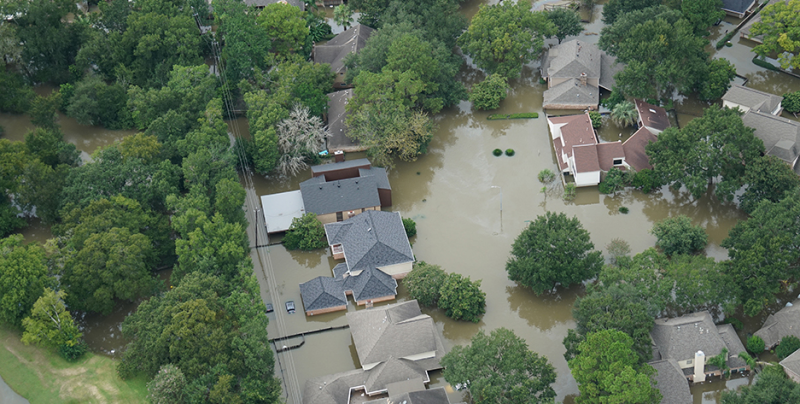When constructing a home in an area susceptible to flooding, it is essential to prepare its foundation accordingly. Floods can cause extensive damage if not properly accounted for in the design of the building and its foundation. Extra precaution must be taken when preparing the ground beneath a potential home site to ensure it can withstand overflow or water saturation.
Before beginning construction, certain steps should be taken to protect against potential flooding issues. These include: assessing the land’s risk factors, elevating the property above flood levels, installing drainage systems, reinforcing walls and foundations with waterproof materials, and more. Here’s a detailed way of doing all of those.

Assessing the land’s risk factors:
Before engaging in construction, it is vitassessing’s risk factors for floods. This is a vital clue looking at a home site’s location and proximity to rivers or streams and any nearby areas prone to flooding. It is also important to consider current and past weather events in the local area; if heavy rains or other flood-inducing events have occurred within the last few years, this should be considered when determining a property’s risk level. Additionally, it can be helpful to check with local government agencies for guidance on identifying areas most vulnerable to floods. In addition, a topographical survey of the land should be conducted to gain insight into any potential water-related hazards.
Elevating the property above flood levels:
Once the risk assessment has been completed, it is important to elevate the property as much as possible above expected flood-level heights. This can include building onto raised foundations or installing elevated footings for a home’s foundation walls. Doing so helps protect against risks posed by floods and storm surges, which can cause significant damage if not properly accounted for in the design of a home’s structure. Additionally, elevating certain parts of the house can help reduce mold growth and other water-borne issues often caused by long-standing water.
Also Read: What Is the Maximum Flood Insurance Coverage in Colorado?
Installing drainage systems:
It is also important to install a proper drainage system on the property when preparing for potential floods. This can include installing gutters, downspouts, and other water-diverting elements around the home’s foundation. Doing so helps direct water away from the home’s walls and foundation, minimizing flood damage in heavy rains or rising river levels. Additionally, it can help reduce moisture buildup around the house, which can lead to mold and mildew growth.
Reinforcing walls and foundations with waterproof materials:
To further protect against flooding, it is important to reinforce any exposed walls and foundations with waterproof materials such as brick, concrete blocks, or waterproof membranes. Such materials help prevent water from seeping in and causing significant structural damage. It is also important to use proper caulking or tar around windows, doors, and other areas where water could enter the home. Additionally, it can be helpful to use waterproof paint on any exposed walls or foundations for added protection against potential flooding issues.
Taking these precautionary steps when preparing a home’s foundation in regions prone to flood can help protect against extensive damage from floodwaters. Proper assessment of risks and waterproofing of materials ensures that your home will be better protected against future floods. However, more than simply waterproofing your home is required. You will have to accept the certainty that there will be times when your precautions will fall short.
Also Read: What are Helical Piers?
So, what do you do when the flood breaks all barriers and enters your basement?
Creating an emergency plan to protect your foundation from extensive damage from floods is essential in regions prone to them. To do so, you should first understand the potential risks and hazards of flooding. Knowing what circumstances can cause flood-related damage will help you develop a plan of action for preparing your home best when it’s at risk. Once that’s done, you can start thinking about the steps you can take to protect your foundation.
One thing that should be included in any emergency plan is a way to divert water away from your property. The most effective way to do this is by using barriers, such as sandbags or levees, to block the water flow around your home and away from it. It’s also important to ensure that all gutters, downspouts, sewers, and other drainage systems are working properly, so they aren’t contributing to the flooding problem.
Another part of an emergency plan is ensuring your home has a strong foundation. If you live in an area with high flood risk, it’s especially important to ensure your foundation is solid enough to withstand the forces of flooding. This means checking for any cracks or weaknesses in the foundation walls and ensuring that your home’s concrete footings are deep enough and wide enough to handle the pressure from rising water levels.
Finally, it’s important to be prepared for an evacuation if necessary. Make sure you know where local shelters are located, have a plan for how to get there, and have all essential documents safely stored in waterproof containers.
Creating an emergency plan is essential for anyone living in a flood-prone region. By understanding what types of hazards exist and taking proper steps to protect your property and family, you can minimize the potential damage caused by floods and ensure that your home stays safe during times of crisis.